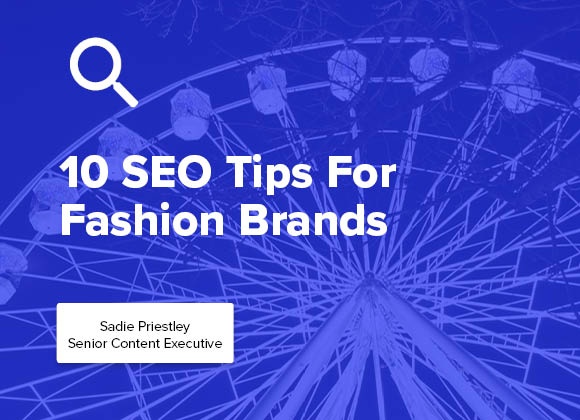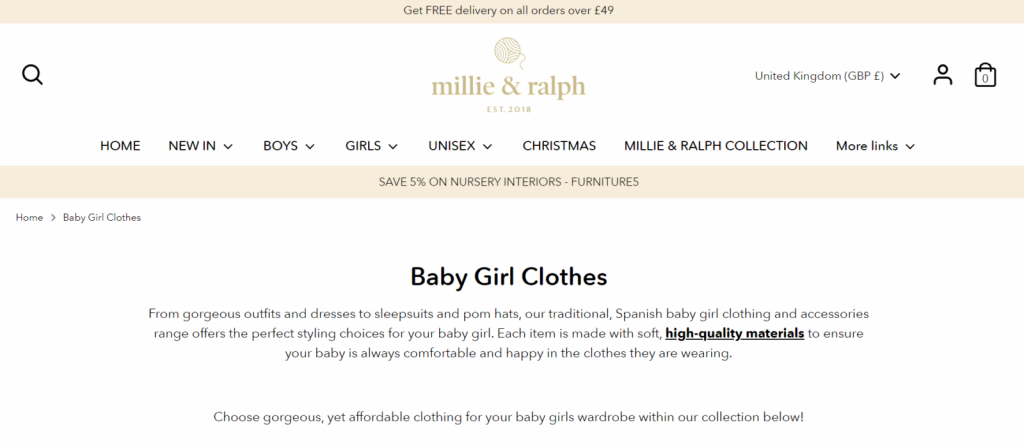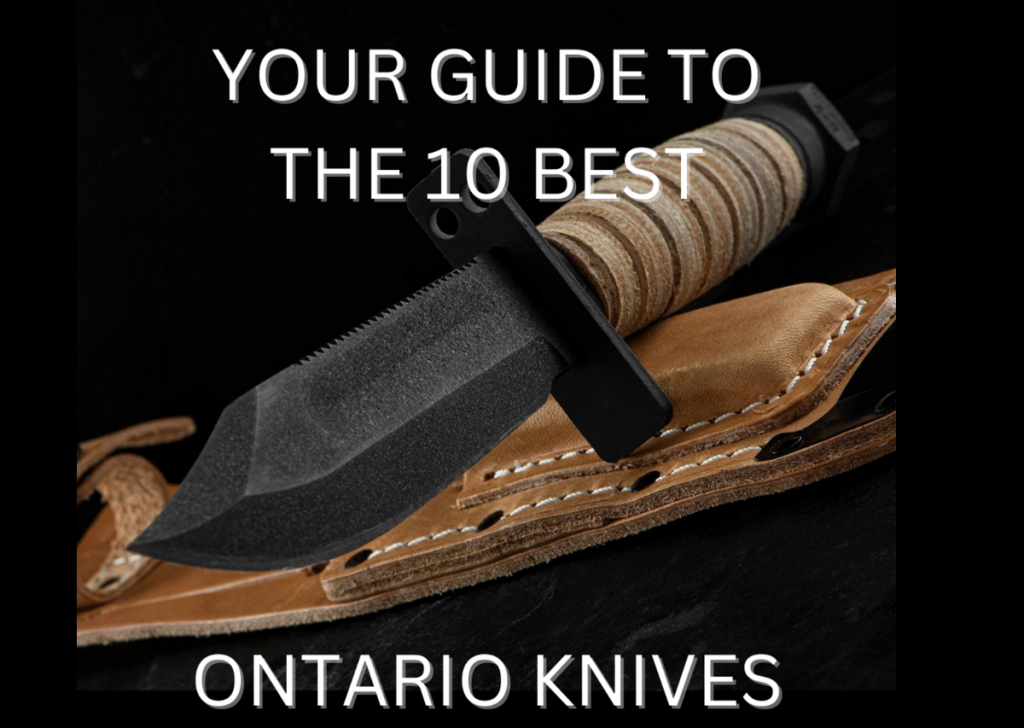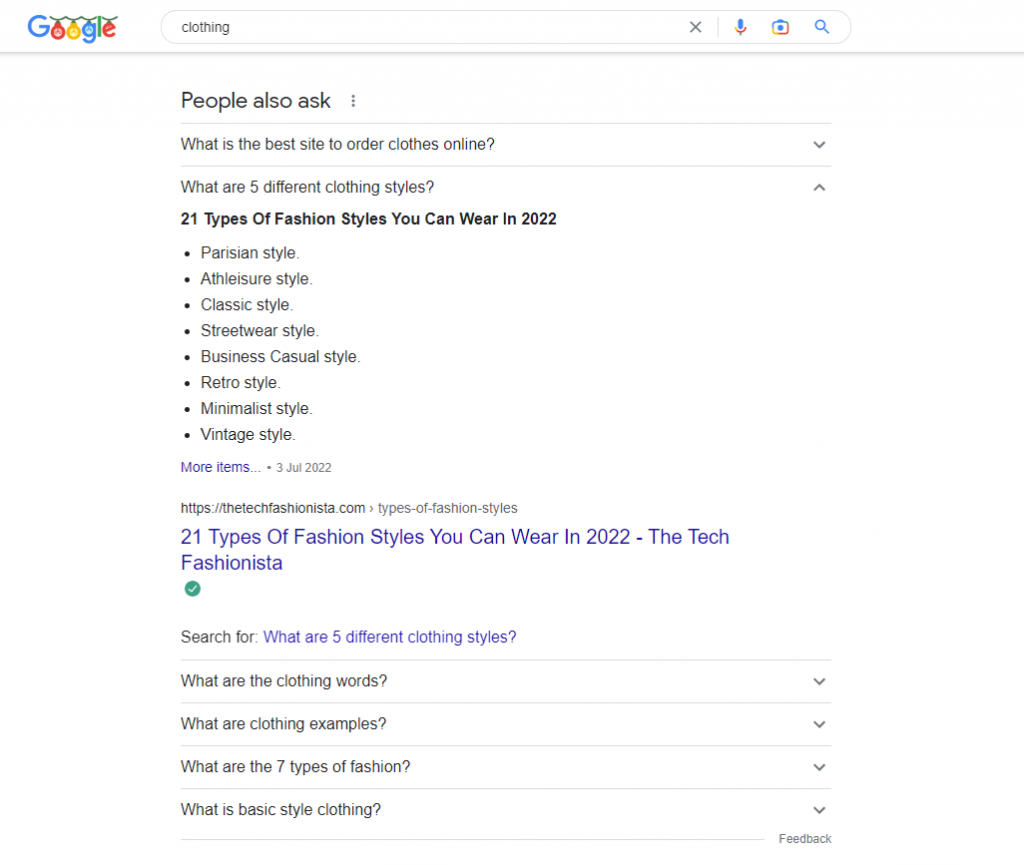The eCommerce world is amassed with fashion brands, from small independent businesses to big-name brands that are recognised globally. It’s not just clothes that these brands have in common, it is the need for exceptional search engine optimisation to help drive traffic to their sites.
In this blog, I am going to share my top 10 tips that every fashion brand should go and implement to increase their organic revenue.
1. Include content on category pages
At the top of a category page, there is the opportunity to include a piece of content. This content should add value to the reader and link to relevant products and blogs. This unique content ensures that the page has something to offer Google, helping it to outrank sites that lack this detail.
You should aim to use long-tail keywords and secondary keywords within this text.
2. Optimise for mobile
Ensure your site is simple to navigate on mobile, allowing customers to easily add items to their basket and check-out. Sites that are mobile-friendly will show up higher in search results. This is important as over half of the searches on Google are made from mobile phones.
For many fashion brands selling affordable clothing the vast majority of traffic comes from mobile. It is known that if your site isn’t mobile friendly people are five times more likely to leave.
Many people will scroll through fashion sites during their lunch break or late in the evening, so having your site optimised for mobile is extremely important. Google support can help test your mobile site speed and offer quick fixes.
3. Blogs, blogs, blogs
Blogs are a great way to increase your site ranking and overall site traffic. If the blogs help to deliver pertinent answers to user queries this can boost your SEO quality by positioning your site as a relevant answer to customer questions on Google.
It’s important to blog about things your customers are interested in and use keywords correctly. If your blog is oversaturated with keywords it can start to look unnatural.
Aim to be blogging monthly with an up-to-date topic, and remember to think about your audience when choosing a writing style, no-matter your writing style you should always end your blog post with a call-to-action. You can also start an external fashion blog to help generate organic traffic.
4. Meta descriptions matter more than you think
Meta descriptions are important for two main reasons. Firstly, they let Google know what your website is about, the easier the meta is to read and comprehend the more chance the webpage has of ranking.
Secondly, think of them as a mini pitch that is going to convince a user that your website has everything they need. A brief but captivating description of what they’ll find on the webpage, as well as a unique selling proposition, such as free shipping.
Always remember to write for humans first and search engines second, as no amount of clever writing will outwit a search engine so there is no point in trying. Also, remember Google will only show between 155 -160 characters, so ensure to prioritise the most important information.
5. Subcategories
Categories and subcategories are important for those shoppers who know what they want; for example, if they’re looking for jeans, they find the category, and then under Women’s > Clothing > Jeans is a sub-category listing jean type, skinny, mom, boyfriend fit, etc. This saves the shopper time scrolling through irrelevant jean types they’d never buy.
Subcategories also allow your site to target multiple search terms and not just one or two, helping to increase your SEO ranking.
6. Keyword research
Keyword research is important for all areas of a website, however, a great place to start with keyword research is category names.
Use primary keywords to help name your category pages. If you have a page of party dresses, you can look to see if it would be more beneficial to name the category ‘occasion wear’, ‘going-out clothes’, or ‘party dresses’ based on your keyword research.
Keep in mind that you should always be thinking about keyword optimisation and updating content on your site with primary and secondary keywords as they can change.
Semrush and Ahrefs are great tools for keyword research.
7. Focus on user experience
Think about how easy your site is to navigate. Is it clear when items have been added to a basket? Are there relevant filters to stop people from having to browse things that aren’t available in their size? Are the categories and subcategories clear?
As well as this, think about what you’re offering your customers that other fashion brands aren’t. Do you have a sustainability promise?
Do you offer free shipping? Is next-day delivery available? If so, make sure your customers are aware of this.
Visual merchandising is also a great way of increasing user experience and sales. Have you ever been browsing a website and you see something you love but you just don’t know what you’d style it with? Wouldn’t it be helpful if next to the clothing item was something that would pair with it perfectly?
Having outfit highlights, or putting clothes that match well near each other on category pages is a great way to make shopping that bit easier for your customers.

8. Backlinks
Don’t just allow your blogs to sit on your website, use them to acquire backlinks. This is where your blog is featured on another website and they link back to your site, this is also known as outreach.
Ensure when you’re looking for sites for backlinks that they’re relevant and reliable. Backlinks can help you to gain domain authority and trust as well as improve your chances of people clicking through to your site.
9. Format content for featured snippets
Over 10% of search engine result pages (SERPs) have featured snippets. They’re a great way of increasing brand awareness, ideal for fashion brands that are wanting to increase their exposure.
There are ways in which you can format content on your site that can help you to earn a featured snippet, if you get a featured snippet on Google you know you’re doing something right.
- Bullet points
- Numbered lists
- Infographics
- Answering question-based searches directly
These are all things that can be done through blogs and detailed category page content.
10. Have a clear URL
This is a relatively easy task that can significantly impact your on-page SEO. A clear and simple URL helps search engines understand your page and creates a more user-friendly experience in the SERPs.
Remember to be concise, many search engines can’t process long URLs which can make your webpage rank lower. Around 60 characters are best, include the primary keyword if possible.
For help transforming your online presence and increasing sales with our proven SEO recipe or SEO snacks then don’t hesitate to get in touch with a member of our friendly team.
At eComOne we’re a strategic agency that helps ambitious eCommerce brands to grow, we exist to reduce your stress. Our core values are being proactive, transparent and having passion in everything we do. If you’re the owner of a fashion brand and you’re wanting to know more about how SEO can help to increase organic traffic to your site, book a free discovery call.







